Donate now to support the LLIFLE projects.
Your support is critical to our success.
Your support is critical to our success.
= Ariocarpus intermedius (Backeb. & Kilian) M.Voldan
Notes: (Basionym not stated)
Accepted Scientific Name: Ariocarpus fissuratus K.Schum. in Engl. & Prantl
Nat. Pflanzenfam. Nachtr. [Engler & Prantl] 3, Abt. 6a: 195. 1894

Roseocactus intermedius (Ariocarpus intermedius) Photo by: Peiffer Clement
Synonyms:
- Ariocarpus intermedius (Backeb. & Kilian) M.Voldan
- Roseocactus intermedius Backeb. & Kilian
See all synonyms of Ariocarpus fissuratus
back
Accepted name in llifle Database:Ariocarpus fissuratus K.Schum. in Engl. & Prantl
Nat. Pflanzenfam. Nachtr. [Engler & Prantl] 3, Abt. 6a: 195. 1894
Synonymy: 22
- Ariocarpus fissuratus K.Schum. in Engl. & Prantl
- Anhalonium Engelmannii Lem.
- Anhalonium fissuratum (Engelm.) Engelm.
- Mammillaria fissurata Engelm.
- Roseocactus fissurams A.Berger
- Roseocactus fissuratus (Engelm.) A.Berger
- Ariocarpus fissuratus f. aurea
- Ariocarpus fissuratus var. lloydii (Rose) W.T.Marshall
- Ariocarpus fissuratus subs. lloydii (Rose) U.Guzmán
- Ariocarpus lloydii Rose
- Roseocactus lloydii (Rose) A.Berger
- Ariocarpus fissuratus var. lloydii f. aurea hort.
- Ariocarpus fissuratus var. lloydii f. cristata hort.
- Ariocarpus fissuratus f. monstruosus
- Ariocarpus fissuratus var. pailanus Halda
- Ariocarpus fissuratus f. pectinatus hort.
- Ariocarpus fissuratus f. rubra hort.
- Ariocarpus intermedius (Backeb. & Kilian) M.Voldan
- Roseocactus intermedius Backeb. & Kilian
- Ariocarpus lloydii var. mayor Frič
- Ariocarpus fissuratus var. lloydii cv. latus
- Ariocarpus fissuratus cv. Cauliflower x Godzilla
- Ariocarpus fissuratus cv. Godzilla
- Ariocarpus fissuratus cv. Godzilla (Cotton Flock Type)
- Ariocarpus fissuratus cv. Godzilla aurata
- Ariocarpus fissuratus cv. Godzilla variegata
- Ariocarpus fissuratus cv. Green Coral
- Ariocarpus fissuratus cv. Tri-fingers
back
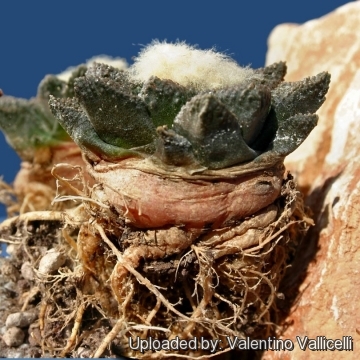
Roseocactus intermedius (Ariocarpus intermedius) Photo by: Valentino Vallicelli
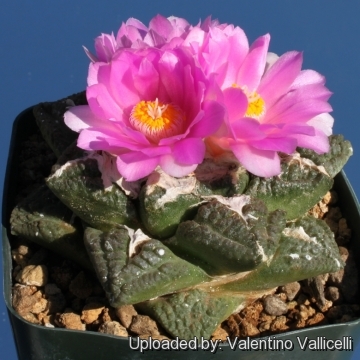
- SB503 (Collector: Steven Brack) Locality: Cuatro Cienegas, Coahuila, Mexico. (Ariocarpus intermedius) Photo by: Valentino Vallicelli
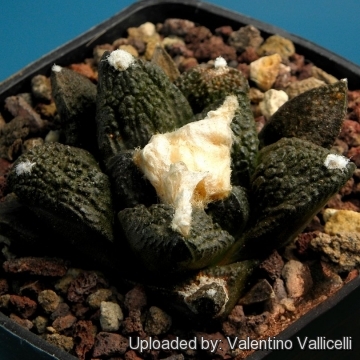
Roseocactus intermedius (Ariocarpus intermedius) Photo by: Valentino Vallicelli
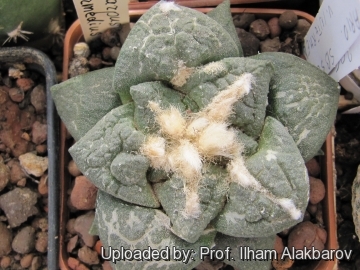
Roseocactus intermedius (Ariocarpus intermedius) Photo by: Prof. Ilham Alakbarov

- KMR 5.2 El Hundido, Coahuila, Mexico. This is is a species of extremely slow growing cacti commonly called "living rocks," in habitat these cacti usually blend in well with the terrain around them. (Ariocarpus intermedius) Photo by: Valentino Vallicelli
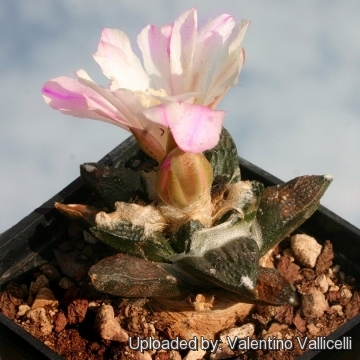
SB503 State Capital, Coahuila, Mexico. (Ariocarpus intermedius) Photo by: Valentino Vallicelli
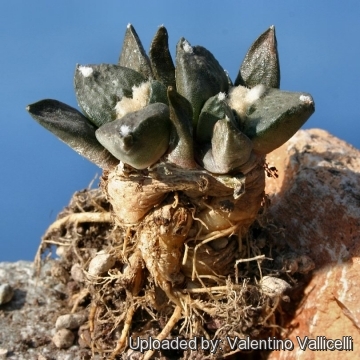
Roseocactus intermedius (Ariocarpus intermedius) Photo by: Valentino Vallicelli
Send a photo of this plant.
The gallery now contains thousands of pictures, however it is possible to do even more. We are, of course, seeking photos of species not yet shown in the gallery but not only that, we are also looking for better pictures than those already present. Read More...
The gallery now contains thousands of pictures, however it is possible to do even more. We are, of course, seeking photos of species not yet shown in the gallery but not only that, we are also looking for better pictures than those already present. Read More...
| Your Actions | |
|---|---|
| Back to Roseocactus index | |
| Back to Cactaceae index | |
 |
Back to Cacti Encyclopedia index |









